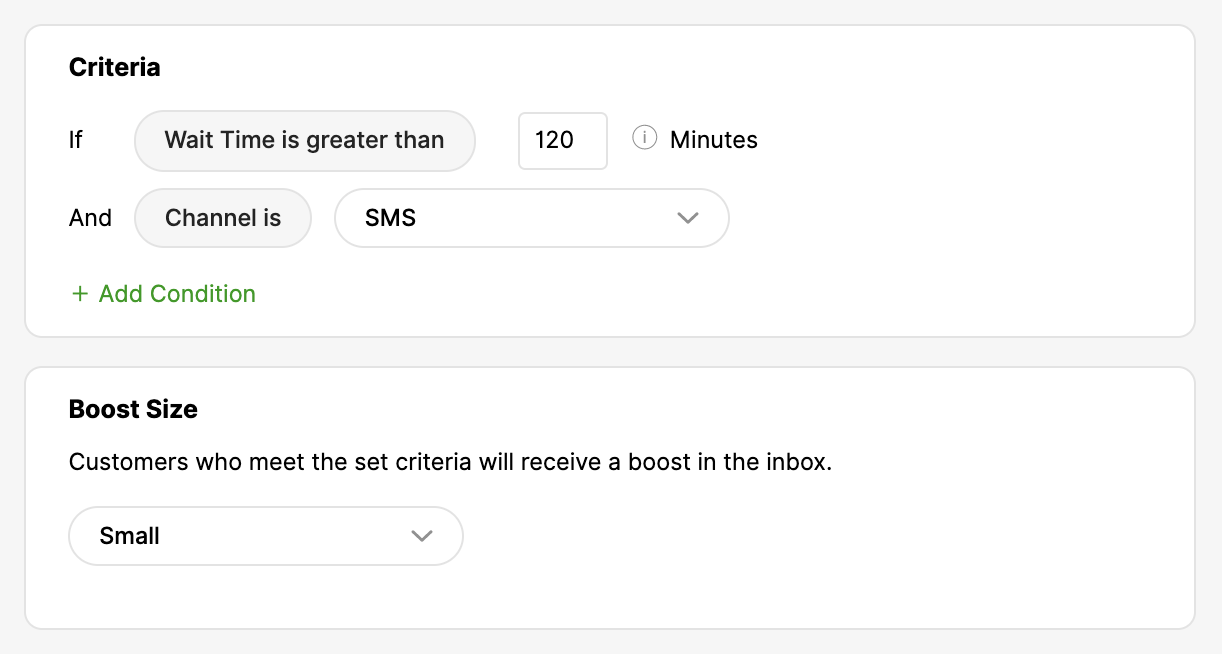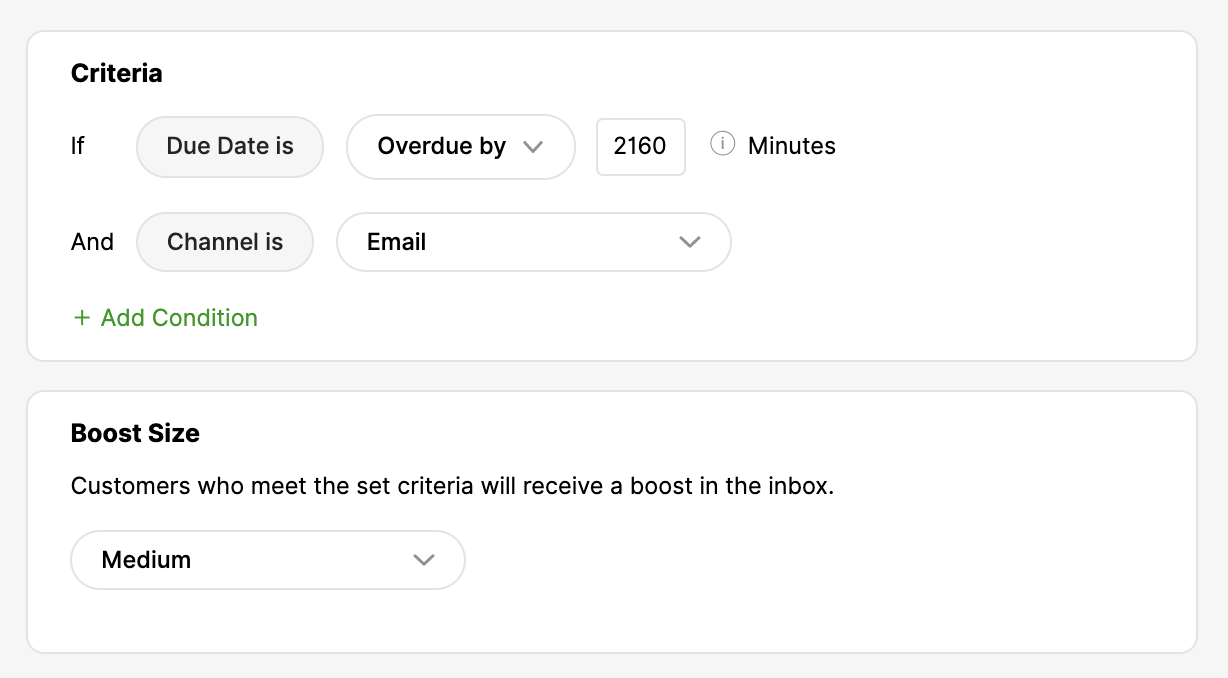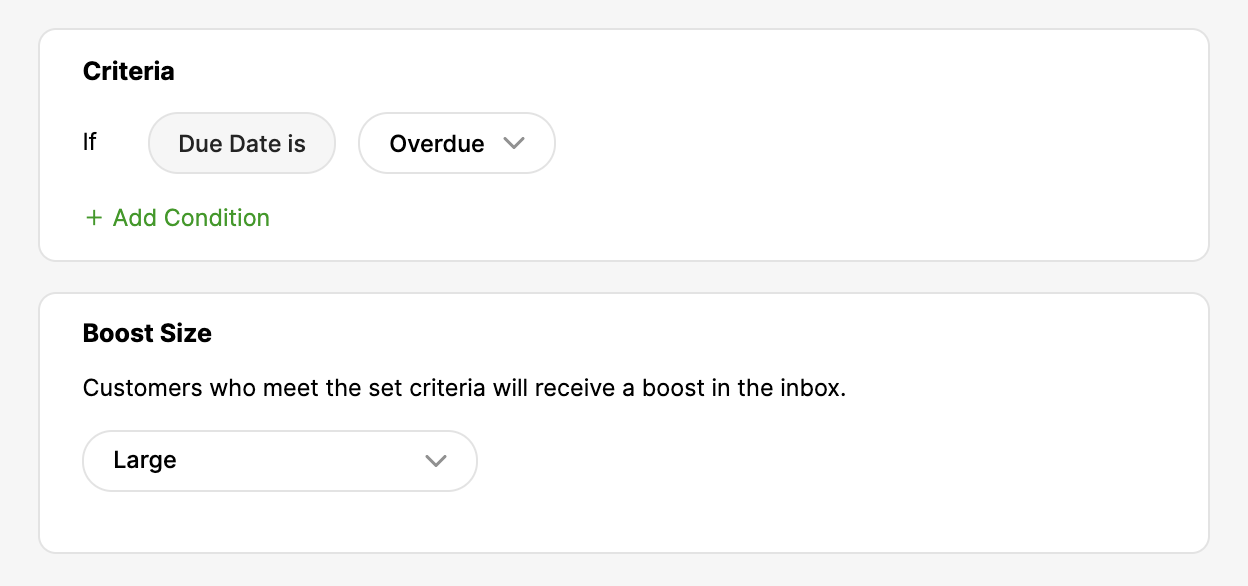People Match — using Priority Boosts — allows Customers to be routed to the next available Agent based on the urgency of their request. This is accomplished by setting up scenarios. It’s also expected to have thematic scenarios as boosts. Scenarios like:
- Customer has an “X” problem or issue.
- Customer is prioritized based on loyalty status (e.g., Silver-Gold-Platinum status).
- Customers who reached out in high volume Channels (e.g., chat).
But what happens to Customers who are not boosted while having many Customers ahead of them who have met at least one boost scenario? Does that mean the non-boosted Customers wait indefinitely or wait a few days longer for assistance than boosted Customers? The answer is no, especially with the help of time-based boost Conditions — Due Date and Wait Time.
Tip – Due dates are used as a tie-breaker
Even without setting up a Due Date boost, normal due dates (by SLA) are used to break ties when two Customers have the same score or no score.
How to approach time-based boosts #
Expect that some Customers may not meet any boost criteria. So ask yourself, “What’s the appropriate wait time for Customers without qualifying boosts until that becomes a reason to boost them?” The answer to that question may vary by Channel. Let’s start by looking at the examples below:
Chat example (Due Date)
Imagine that your company prioritizes routing Customers based on their loyalty tier and the issue they’re reaching out about.
- If your chat SLA is five minutes, but if a Customer has been waiting for 15 minutes — 10 minutes over the SLA — you may need to give them a Medium Boost Size because 15 minutes is a long time to wait for chat. This allows you to boost Customers solely based on wait time effectively.

Messaging example (Wait Time)
Let’s say your SLA for other Messaging Channels is one hour, and it’s acceptable if a Customer sometimes waits for a little over that. But if they wait for two hours, you may need to give them a Small Boost Size. If they wait for three hours, give them a Medium boost, and so on.

Email example
Your email Channel sometimes gets busy. You aspire to close email Conversations fast with a 12-hour SLA. But sometimes, emails back up to two days (even longer). If emails wait for two days (36 hours overdue based on your 12-hour SLA), you may want to give them a Medium Boost Size, so you aren’t just working on new emails with other boosts first.

Boosts used in the examples above help ensure Customers don’t have to wait too long, even if they don’t meet other thematic boost scenarios. You must decide which Boost Size works best for each scenario based on your business needs.
Boost all ‘Overdue’ Customers #
Another way to ensure no Customers “fall through the cracks” is to boost everything overdue, regardless of the Channel. This way, you may have different SLAs for each Channel, Entry Point, Inbox, and such, but you only need to set up one Priority Boost.

‘Due Date’ and ‘Wait Time’ considerations #
Due Date or Wait Time Conditions don’t consider whether it’s within or outside business hours. Some ways you can handle this include:
- Temporarily deactivating the time-based boosts if you want to help other Customers first thing on Monday.









